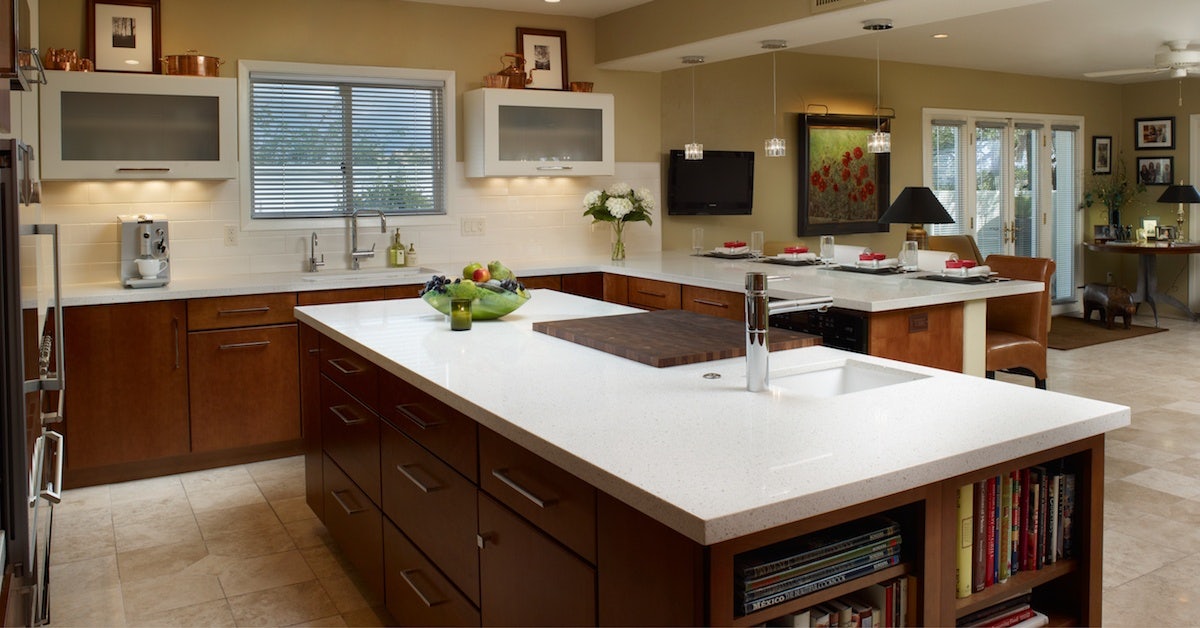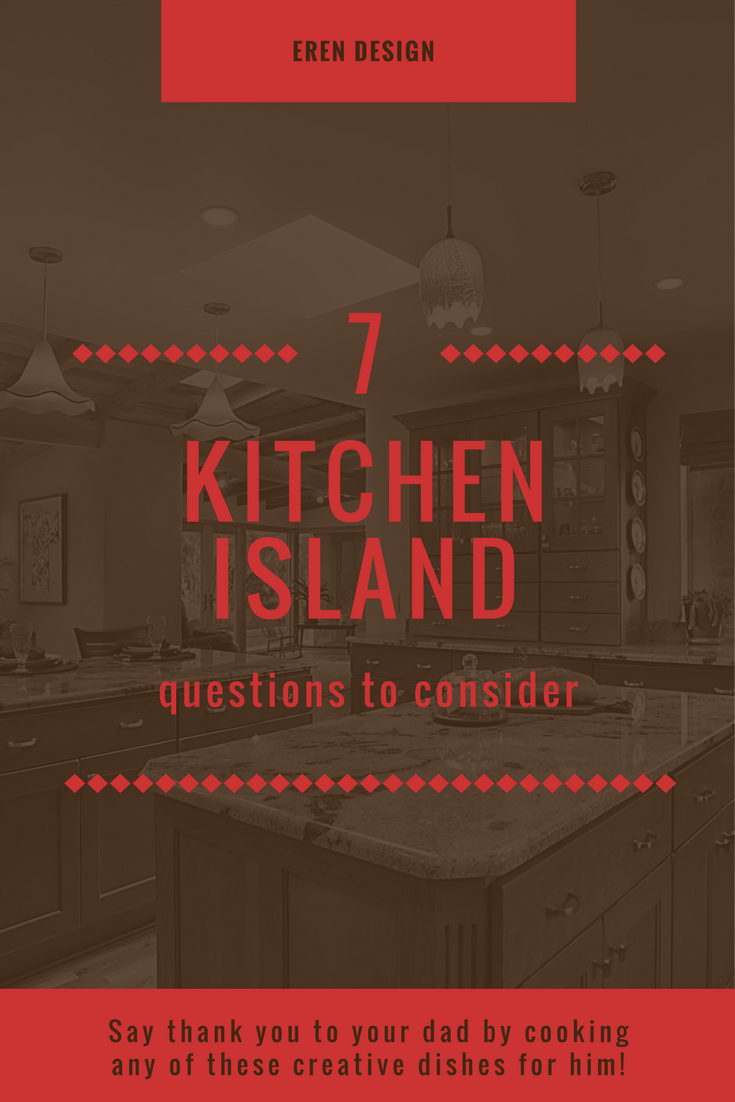A properly sized and designed kitchen island can add functionality to your kitchen. It can provide additional workspace. It can invite visitors to spend time with the cook. And it can give you additional storage.

But, what makes a great kitchen island? We believe it all starts with asking the right questions.

1. How do you plan to use your kitchen island?
This is far and away the most important question. Is your island primarily going to serve as a place for prepping foods? If so, a large space uninterrupted by built-in appliances will be a top priority. Do you want it be where you cook? Then you might consider installing your stove within your kitchen island. Will your island double as an eating perch? Then you’ll need to not only provide enough tabletop space for plates and silverware, but enough under-the-counter room for stools and legs.
2. What appliances would you like or not like located on your kitchen island?
If you want any appliances installed on your island, you will need to decide so in advance. This is because the necessary plumbing and electrical work will need to be added prior to constructing you island. For example, you might want a built in steamer or drawer-style microwave. You might find that an extra sink comes in handy or that you want a gas stove.
3. How high do you want your kitchen island to be?
Standard kitchen island heights are 36 or 42 inches. However, when you’re having a custom island installed, the height can be custom fit you. If you’re taller than the Average Joe, it might be you want an island slightly taller.
Just keep in mind, if you opt for an untraditional height and still want bar seating, the stock bar stools might not work with your island.
4. How much storage does your kitchen island need to provide?
We always recommend including storage in your island. Because, you never know when you’ll discover another kitchen gadget you have to have.
That being said, some design options provide more storage than others. For instance, roll out drawers will allow you to use the full depth of your island’s square footage. On the other hand, open shelving will let you display your beautiful dishware.
5. Where will your kitchen island be located?
Traffic flow can play a huge role in how enjoyable it is to be in the kitchen. This is true whether you’re cooking by yourself or with someone else. You want to consider where your island will be located within your kitchen and how that will impact the flow.
Because as lovely as large islands can be, if it’s so big it blocks you from easily accessing the sink, you might find yourself hating your island rather than loving it.
6. Does your kitchen island need to move?
Do you want an island sometimes and not others? A free-standing island, whether it be on rollers or not, allows you bring extra counter space in on an as-needed basis.
One of the keys here is to make sure you have a space big enough to handle your island when it’s not in the kitchen.
7. Will your kitchen island be visible from other rooms in the house?
Open floor plans encourage bonding and spending time with loved ones. And, they allow you to maximize the square footage of your home. But, creating seamless transitions between your kitchen and the other areas of your home can take a little planning.
To keep your island from looking like a space ship has landed in your great room, consider how it will flow aesthetically with the rest of the décor. For example, you might use the same wood and trim to keep a consistent look.
Ready to start planning your new kitchen island? Let’s talk!

